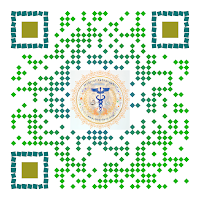Calot's triangle is a small (potential) triangular space at the porta hepatis of surgical importance as it is dissected during cholecystectomy. Its contents, the cystic artery and cystic duct must be identified before ligation and division to avoid intraoperative injury.
Borders
- Medial – common hepatic duct.
- Inferior – cystic duct.
- Superior – inferior surface of the liver.
The above differ from the original description of
Calot’s triangle in 1891 – where the cystic artery is given as the superior
border of the triangle. The modern definition gives a more consistent border
(the cystic artery has considerable variation in its anatomical course and
origin).
Contents
- Right hepatic artery
- Cystic artery
- Cystic lymph node (of Lund)
- Connective tissue
- Lymphatics
- Occasionally accessory hepatic ducts and arteries
Significance
- Cystic artery arises from Right Hepatic Artery in the Calot's triangle in 75%
- Cystic artery origin & course vary in 25% of
population.





















.png)
.png)
.png)
.png)






.png)

.png)
.png)
.png)
.png)
.png)





